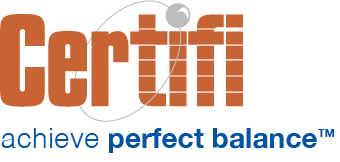Recently, CVS Health released its 2021 Environmental, Social and Government (ESG) Report. As the parent company that owns a retail pharmacy chain, CVS Pharmacy, a pharmacy benefits manager, CVS Caremark, and a health insurer, Aetna, CVS Health uniquely sits on both the retail and insurance side of the healthcare continuum. Their ESG report highlights the company’s priorities, strategy, and roadmap and aims to elucidate its so-called Healthy 2030 goals.
Though the document highlights achievements and goals for the company as a whole — including its non-insurance segments — it still serves as a roadmap for the future of the health insurance industry in some respects.
With that in mind, here’s a look at four key aspects of the ESG report that highlight what the health insurance industry may look like in the future.
Focus on Member Health and Experience
Health insurers as a whole continue to transform their organizations to be more member-centric. With a retail arm, CVS is uniquely positioned to take advantage of that health insurance transformation. Their retail, pharmacy, and HealthHUB concept make it easy for individuals — including health insurance plan members — to access care. To further that aim, the company plans to open new neighborhood primary care services. The goal: To make primary care more convenient and accessible so more people have access to preventive care services. That integration of clinics, pharmacies, and insurance could improve convenience. At the same time, that integration helps CVS Health create a walled garden that keeps members in the CVS Health family. With economies of scale and better member data access, CVS has an opportunity to not only improve health outcomes but at the same time drive down costs.
Another way CVS Health plans to improve the member experience is through digital tools to help members manage appointments as well as their insurance benefits. Though this capability isn’t unique — most insurers leverage apps to streamline insurance information — it’s an important part of improving the member experience. Perhaps more importantly, the company is placing a premium on simplifying access to virtual care. Aetna launched its first virtual first primary care plan in 2021. That plan leverages Teladoc Health’s physician-led care team augmented by Aetna’s provider network and CVS Health services. The expansion of digital tools and virtual health care are two definite trends to watch in the next five years.
Affordability
As CVS Health noted, health care costs continue to concern members. 85% of respondents said health care costs are somewhat or very important when it comes to their health, according to a CVS Health graphic. For CVS Health, that means combining all their assets — CVS Pharmacy, MinuteClinics, and HealthHUB locations — with Aetna’s network. Called the Aetna Connected Plan, it offers lower premiums — as much as 20% lower than comparable plans in the market. The plan also offers $0 copays at MinuteClinic, free 1 to 2-day prescription delivery, and 20% discounts on health-related items. Rolled out in ACA marketplaces, the plan attracted 37,000 members in 9 markets during the 2021 open enrolment period.
What does it mean for the future? Aetna’s reemergence in ACA marketplaces with an integrated offering shows that health insurers are willing to invest in exchange products. It also shows that Aetna is willing to compete on price by leveraging CVS Health’s considerable retail and pharmacy advantages.
Health Equity
CVS Health spent a lot of time elucidating its health equity activities. Those include:
- Investing in new Health Zones in five zip codes. The investments address things beyond healthcare, like housing, access to food, transportation, education, and workforce training.
- Project Health provides free health screenings, wellness information, and individual consultations at no cost. CVS Health plans to double the number of mobile screening units from 4 to 8 in 2022. Additionally, the company aims to provide 4 million biometric screenings by 2030. The project to date has offered $4.6 million in free medical services in 32 metro markets across the US.
- Awarded grants designed to improve culturally relevant and competent mental health services and support. Organizations receiving grants included Mental Health America, the American Foundation for Suicide Prevention, and the National Association of Free and Charitable Clinics.
- Promoted maternal care by making a $1.74 million investment to help expectant parents — particularly Black women — to receive pregnancy, birth, and postpartum care. Also donated more than 1000 blood pressure monitoring machines to counties with the highest maternal mortality numbers in the country.
Investing in improving the social determinants of health is an activity more health insurers have undertaken in recent years. Investments that improve the prevention of costly diseases can save insurers money while, frankly, offering good PR.
Sustainability
CVS also has set a sustainability goal, aiming to reduce its environmental impact by at least 50% by 2030 and achieve net-zero emissions by 2050. As the company noted, the effects of climate change on individual health could be serious. As a result, it’s in the company’s best interests to act to limit its environmental impact. To do that, they’re undertaking:
- A more energy-efficient footprint. As an example, the company transitioned nearly 800 stores to LED lighting. The company is also aiming to leverage alternative energy to meet 3 to 5% of its current energy demand.
- Moving to digital — not paper — solutions. In addition to reducing printed receipts, the company has phased out weekly circulars, making them available online instead.
- Minimizing waste. In addition to conducting waste audits to develop a zero-waste program, CVS Health is working with suppliers to eliminate unnecessary packaging. Plus, the company is piloting a program to shift from diesel-powered refrigerated transport units to fully electric units to minimize carbon emissions.
CVS Health may be unique among health insurance organizations trying to impact packaging and refrigeration units among suppliers because they operate retail chains, but other health insurers are also undertaking efforts to improve their sustainability. More consumers — especially young, healthy consumers that can be profitably insured — base purchasing decisions in part on the sustainable practices of sellers. Sustainable operations will be a staple in the future of the health insurance industry.
Certifi’s health insurance premium billing and payment solutions help health insurers improve member satisfaction while reducing administrative costs.



